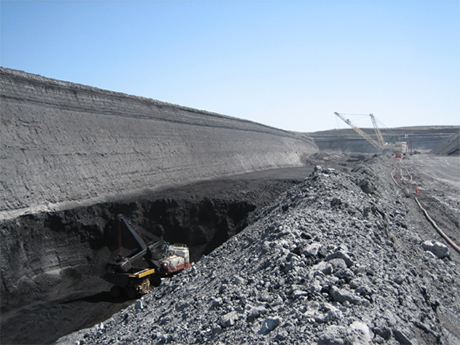Coal Assessments: Introduction
More than half of the electricity produced in the United States is generated by coal-fired power plants. Statistically, the United States has abundant supplies of coal. However, understanding of how much of that supply of coal is actually economically recoverable and of sufficient quality to meet current emission standards is important to ensure adequate energy supplies in the future. Therefore, in energy assessments, it is not only essential to determine the in-place coal resources, but also to inventory the coal reserves. Coal reserve estimates provide a more accurate appraisal of how much of the total U.S. coal resource base is realistically available for production in the near and mid-term future.

Coal extraction in a Powder River, Wyoming coal mine.
There is often confusion concerning the use of the terms coal “resources” and “reserves.” Although the two terms are frequently used interchangeably, there are significant differences. Coal resources include those in-place tonnage estimates determined by summing the volumes for identified and undiscovered deposits of coal of a minimum thickness (14 inches, 36.6 cm or more thick for anthracite and bituminous coal; 30 inches, 76.2 cm or more thick for lignite and subbituminous coal) and under less than a certain depth (6,000 feet, 1828.8 m). Coal reserves are a subset of the coal resources. To be classified as reserves, the coal must be considered as economically producible at the time of classification, but facilities for extraction need not be in place and operative.
The next generation of U.S. coal assessments will not only be a refinement of the coal resources, but also the systematic determination of the regional coal reserve base in all the major coal provinces in the US. The first U.S. coal basin to be evaluated in this new assessment phase is the Powder River Basin, WY (PRB). The PRB is the single most important coal basin in the U.S. production-wise, supplying over 37 percent of the total coal produced in the U.S. in 2003.
Top of Page
|